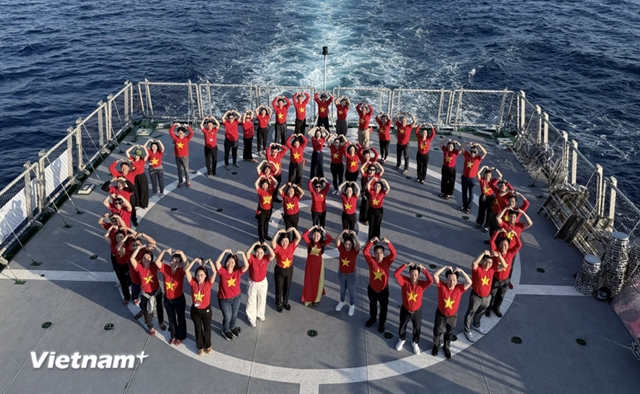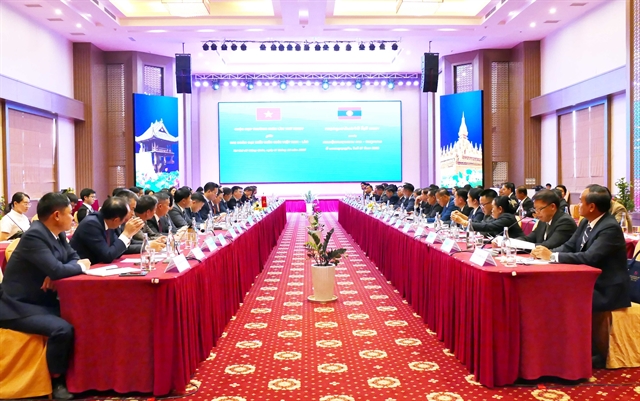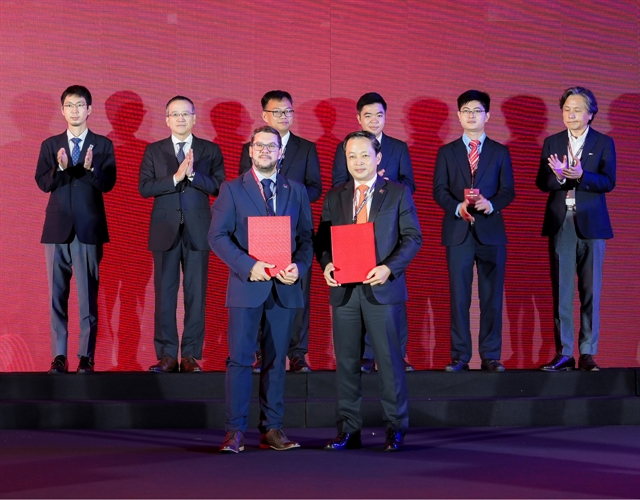 Opinion
Opinion

 |
Doãn Thị Mỹ Hạnh, General Director of ANDRITZ Vietnam Co., Ltd. Photo bnews.vn
Currently, most of the hydropower plants of the Electricity of Vietnam (EVN) are equipped with advanced technology. However, in the context of digital transformation, EVN is continuing to build infrastructure, not only for hydroelectric power plants, but also for other systems such as transmission, metering, and dispatching. Doãn Thị Mỹ Hạnh, General Director of ANDRITZ Vietnam Co., Ltd., which had been providing materials, equipment and technology for hydroelectric power plants in Việt Nam, talks to the media about the matter.
As a unit that has been involved in providing materials, equipment and technology for hydroelectric power plants in Việt Nam, how do you evaluate the current technology application in EVN's factories compared to the rest of the world?
Our company has been in Việt Nam for nearly 30 years, witnessing the very impressive development journey of EVN and Việt Nam. In the overall picture of the hydropower sector - in particular EVN's plants, most of the plants are equipped with technology that is close to those of plants of the same age in the world and are equipped with advanced control systems. However, when we enter the era of industry 4.0 and digital economy, EVN's plants need to innovate to optimise their operation.
In the past few years, the development of information technology has helped us gain a vision of the possibility of more efficient exploitation of existing factories. In addition, control systems are coming to the stage that they need replacing and upgrading with significant updates in operating technology with an increasingly high degree of automation.
Along with the right development strategy and the determination and investment interest of EVN in the coming years, I think that EVN will create opportunities to build technological infrastructure not only for hydropower plants but also for other systems such as transmission, purchase and sale, metering, dispatching, thereby forming an ecosystem that ensures long-term sustainable development for EVN's power plants and the national power system.
Can you share your opinions about the importance of digitisation for the hydropower sector and an overview of digital technology in the hydropower sector today?
Digitisation is an inevitable development in most industrial fields and the electricity industry, even with the electricity industry, digitisation started very early when we had modern control systems in power plants.
However factories are operating and being exploited as local systems, without a common connection infrastructure platform to apply digital products to converge data from multiple technology platforms for an overall model suitable for the fourth industrial age.
In other words, we have not yet fully exploited the value of data, have not built an ecosystem at the corporate scale - an ecosystem where the technology in monitoring and operation are connected, collected, analysed, shared and supported each other to serve a long-term sustainable development strategy.
Digitisation will open up many opportunities for managers to improve the way plants are operated and maintained, which is the main lever for managers to respond to the challenges they are or will face, and promote sustainable growth. Digitisation is becoming an indispensable element in all stages of development, from planning, design, construction, operation, maintenance to asset management of hydroelectric power plants.
Digitisation has become a powerful tool to improve decision making for plant managers and help optimise resources management. Digital technology is now widely applied in all stages of hydroelectric projects, from design, construction, to the use of digital simulation tools; for operation and maintenance, incorporating tools such as machine learning through remote monitoring of asset health. It offers undeniable value for safety and environmental goals, operating costs and indirect impact on financial benefits.
Commercially, the immediate benefits of digitisation can be summarised as reduced operating and maintenance costs; improved efficiency of power plants and power grids; being able to support the creation of maintenance plans combined with hydrological data and predict future production; reducing downtime both on and off the plan; and extending equipment/assets uptime - thus maximising return on investment.
EVN is building a roadmap for digital transformation at hydroelectric power plants to improve the efficiency of operation management and repair and maintenance, how can ANDRITZ help EVN in this area?
ANDRITZ has experience in implementing solutions and digital services in the field of operation and maintenance in power plants, including the full range of in-plant and remote maintenance and operation management activities to intelligent support services via remote digital platforms.
Similar to the cooperation in ongoing projects around the world with more than 17 GW, ANDRITZ can support EVN in its digitalisation roadmap by sharing its experience in the field of operation management and maintenance of the application of digital technologies; combining centralised and decentralised capabilities, with the support of digital solutions. Such an approach relies on an advanced diagnostic and monitoring centre that extracts operational information and data from all devices.
Maintenance tools and methods such as intelligent monitoring, reliability-based maintenance, predictive maintenance, computerised maintenance management systems are most effective when fully embedded in processes and appropriately trained workforce.
There will be many challenges in this digital transformation journey, can you share your perspectives on these issues?
Digital transformation and the application of digital transformation products may face a number of barriers concerning their effectiveness.
The main requirement for digitisation is the adequacy of the underlying infrastructure, not only in terms of information technology but also in the control and data collection infrastructures at factories. The lack of either of these factors creates a major barrier.
For example, the security and assets of the factory need to be properly invested because it is of vital importance. A cyber attack can affect not just one or more plants, but the entire national energy system. Security concerns can be a barrier both at the EVN corporation level and at the Government level.
At the same time, the current legal corridor may not allow innovation or application of data sharing technology. The development of new regulations will take longer than we are calculating. In addition, because digitisation technology in Việt Nam is relatively new compared to Europe, the United States or China, costs may hinder the development of digitisation.
So what actions should be taken to maximise the benefits of digital transformation in the hydropower sector in Việt Nam?
There is no single formula, solution or action that meets and is suitable for all requirements and therefore developing sets of evaluation criteria for the process needs to be the concerns of all relevant parties to continuously measure, evaluate and improve the digital transformation performance. In the process of implementing digital transformation, the participation of senior leaders is very important in addition to cooperation with reputable technology providers.
For successful digital transformation, all stakeholders must rally around a common vision and make their valuable contributions to this vision. A strong commitment from high-ranking leaders is therefore required to drive change and ensure that all operators adapt and effectively exploit the new way of operating.
It involves changing the culture and renewing the thinking of human resources at factories and companies. Eliminating or minimising barriers and challenges in accordance with the specific conditions of the business are necessary actions.
A common approach taken by some of the customers to whom ANDRITZ has provided solutions is for them to conduct a pilot program of the technology, which can be piloted at a designated hydroelectric plant. At the same time, the investors will build weights on the importance of the systems and equipment of the plant to determine the investment priority according to each specific level and period. VNS




